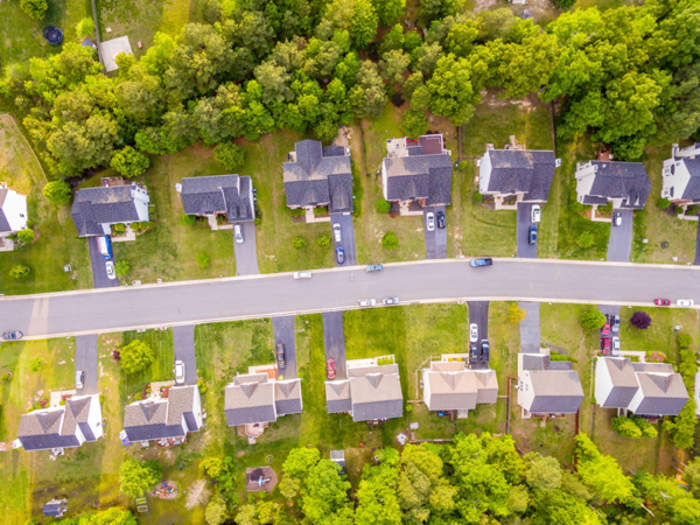How to Keep Your HOA’s Finances Strong in the Face of Inflation
If you're part of an HOA, you already know that managing the community's finances can be tricky. At AMS Northwest, we’ve seen firsthand how inflation can sneak up on communities—especially when it comes to planning for long-term projects like road repairs, landscaping upgrades, or major building repairs. Inflation affects everything, from the price of materials to labor costs, and it’s important to plan ahead so your HOA isn’t caught off guard by rising costs.
So, let’s chat about how to keep your HOA’s finances healthy, even when prices keep going up.
Why Inflation Matters for Your HOA
Here’s the deal: Inflation means things get more expensive over time. And for an HOA, this can really mess with your reserve funds if you're not careful. Let's say your community has a plan to repave the main road that runs through your neighborhood in the next few years. Ten years ago, that project might have cost around $40,000. Today? That same project could easily cost $60,000 or more, just because of inflation. Without adjusting your reserve plan to account for these rising costs, you might find yourself needing extra cash to cover the difference—like suddenly scrambling for a special assessment, which nobody wants.
At AMS Northwest, we help HOA boards stay on top of this by recommending regular updates to reserve studies. This is a simple way to adjust for inflation and ensure your community is financially ready for upcoming projects.
How Inflation Affects Your Reserve Study
So, how does inflation fit into reserve planning? Well, reserve studies are essentially a roadmap for the future, outlining the projects you’ll need to fund over the next 30 years. These studies help boards know how much money they should be setting aside each year for future repairs and replacements.
The catch? Inflation. Without factoring in inflation, your reserve study might underestimate how much things will cost down the road. For example, if your study predicts a road repaving project will cost $40,000 five years from now but doesn’t adjust for inflation, you could end up needing more like $55,000 to get the job done. If you’re not prepared, you may find yourself in a tough spot.

What You Can Do About It
The good news is, you don’t have to wait for costs to catch you off guard. Here’s how you can take charge:
1. Update Your Reserve Study Regularly:
AMS Northwest recommends that reserve studies be updated every three years. These updates ensure that your plan reflects the current cost of materials, labor, and any other factors that affect your future expenses. It’s like getting a fresh map so you know exactly where you’re going.
2. Plan for Inflation:
When updating your reserve study, we also suggest adjusting for inflation. The costs of materials like asphalt, concrete, or even landscaping plants are going to increase over time, and it’s crucial to set aside enough money to keep up with that.
3. Set Aside More Each Year:
As inflation pushes prices up, you’ll need to increase your reserve contributions just a little each year. It’s a natural part of the process. But here’s the key: by increasing contributions gradually, it won’t feel like a huge hit all at once. Plus, you’re preventing the dreaded special assessment down the line, which is always a much harder pill to swallow.
Don’t Let Interest Trick You
A common myth we hear is that interest earned on reserve funds will help offset inflation. While it’s true that interest can give a little boost to your reserves, it’s never going to be enough to fully offset rising costs. Inflation affects the cost of big-ticket items like road paving, major landscaping upgrades, and building repairs—far more than any interest could make up.
And let’s be real—temptations exist to “make more” by putting reserve funds in riskier investments, like stocks or real estate. But remember, board members are fiduciaries, which means they are legally responsible for managing your HOA’s money with care and in a way that minimizes risk. So, while those risky investments may seem tempting, they could end up costing more than they make, and no one wants that.
The Goal: Stay Fully Funded
The best-case scenario is to be fully funded—meaning you have enough money in the reserve fund to cover 100% of the projected future repairs and replacements. When your HOA is fully funded, you won’t have to worry about inflation throwing you off track, and you can avoid having to ask homeowners for special assessments in the future.
If you’re unsure whether your HOA is fully funded or how much you should be setting aside each year, that’s where we come in. AMS Northwest can help you create a realistic, long-term funding plan so your HOA can stay ahead of inflation and keep everything running smoothly.
Don’t Let Inflation Catch You Off Guard
So, what’s the takeaway here? Inflation is something we can’t avoid, but by staying proactive, regularly updating your reserve study, and adjusting your funding, your HOA can weather the storm. It may feel like a bit of work now, but taking these small steps ensures your community stays financially strong for years to come.
If you’re feeling unsure about where to start or need a hand in updating your reserve study, reach out to us at AMS Northwest. We’re here to make sure your community’s finances stay on track, no matter what the economy throws your way.



